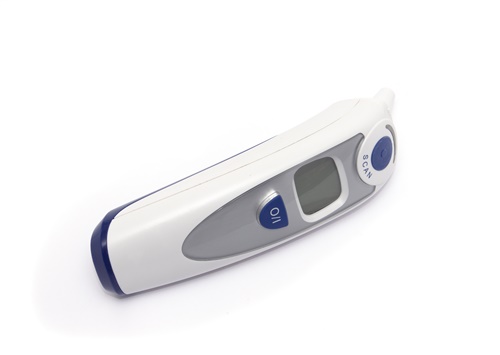SSZTAT9 september 2016 MSP430FR2311
The market for fitness products received a jolt several years ago when wristband-sized health monitors burst on the scene. Then, smartwatches made their appearance and they were able to gather more advanced health-related data. Now, telemedicine is steadily climbing in popularity. In fact, some say that telemedicine, which will rely on remote health monitoring devices to a great extent, holds tremendous promise for reducing healthcare costs in the future.
So, as the market for health monitors picks up steam, microcontrollers (MCUs) with a special combination of capabilities and resources will be needed to simplify product development and provide the qualities required by these devices. At the top of developers’ ‘must-have’ list has got to be a high degree of integration, since most health monitors are very small devices, that, in turn, means that the MCU and related circuitry must fit into a tiny form factor.
A new breed of MCUs, which includes TI’s new MSP430FR2311 MCU, integrates much more than typical MCUs have in the past. Newly integrated capabilities include an analog front-end with several standard operational amplifiers as well as a very low-power transimpedance amplifier (TIA) capable of converting a very low current into a voltage signal, one homogenous block of Ferroelectric Random Access Memory (FRAM) instead of the typical RAM/Flash memory architecture, as well as an on-chip oscillator. That’s a lot in a small 3.5 mm x 4 mm package.
For small form factor health monitoring devices like digital thermometers, such an MCU is needed. Not only will the entire system fit within the demanding space requirements of the application, but the very sensitive TIA will make the device extremely accurate to avoid false readings, a necessity in the health industry. The MSP430FR2311 MCU’s TIA has a current leakage input of just 50 pico-Amperes (pA), 20 times lower than any other current sensing solution in the industry. A lower current input leakage allows a TIA to sense lower currents, making the device that much more sensitive to whatever parameter is being measured. The low-power TIA also prolongs the device’s battery life.
 Figure 1 Digital thermometers need a
small form factor MCU
Figure 1 Digital thermometers need a
small form factor MCUAnd a unified FRAM memory architecture means that the developer doesn’t have to juggle code-storage space in Flash memory vs. data-logging storage in RAM. One large block of FRAM lets the system designer decide what ratio of code-to-data storage is most appropriate to the application.
Of course, next-generation health monitoring devices might evolve into multi-functional devices. For example, some monitors now measure ultraviolet (UV) light levels to alert users of conditions that might lead to sunburn. Sensors are available to measure temperature and humidity. Combining these capabilities could lead to a device mounted on a wristband that warns the person wearing it of the need for sunscreen and hazardous heat conditions. The next step might be to monitor skin temperature and heart rate, which could provide an early warning to construction workers of heat exhaustion.
Certainly, thanks to highly capable MCUs like the MSP430FR2311 MCU, the types of low-cost, highly accurate, highly versatile health monitoring devices we will see in the future is practically limitless.
Follow along with our other blog posts related to MSP430FR2311 MCUs:
- Reach new low-power levels for any sensor based design with new MSP430FR2311 MCU
- IoT, wearables and other new applications create need for super-sensitive sensors
- Air quality monitors and smoke detectors put on a new face
- Smart buildings get smarter with ultra-low-power MCUs
- When green meets the IoT
- Value line MCUs bring more analog to personal electronic products